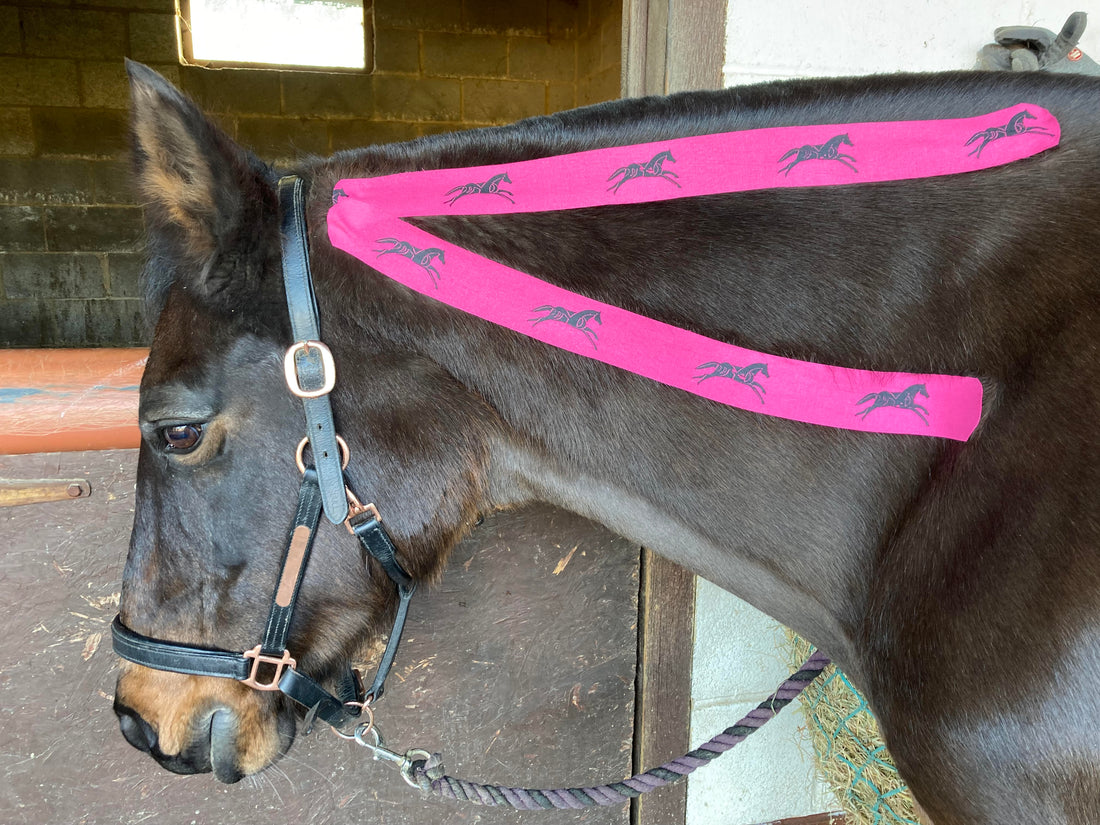
How Equine Kinesiology Tape help my Horse?
Share
The Origins of Kinesiology Tape
Kinesiology tape (K tape) was developed by a Japanese chiropractor named Dr Kenzo Kaze. As a chiropractor, he sought a method to support the treatments he offered his human patients. Before k tape, the only tape available was rigid, thick, and lacked elasticity. While this rigid tape provided joint support, it restricted movement and was unsuitable for soft tissue.
Dr Kaze first developed k tape in the mid-1970s. This revolutionary tape facilitated the body’s natural healing process while providing support without limiting mobility. By the 1980s, Japanese athletes were using the tape during competitions. By the 2012 London Olympics, k tape had become a staple for athletes and healthcare professionals. Recognizing its success with humans, equine professionals realized its potential benefits for horses. By 2014, k tape for horses had arrived on the market.
What is Kinesiology Tape?
Kinesiology tape is a stretchy, breathable tape backed by removable paper. It’s made from cotton, spandex, and adhesive, making it latex-free and ideal for sensitive skin. With alternating ridges, the tape interacts with pain receptors, blood vessels, and the lymphatic system. The k tape for horses is non-restrictive, moving and recoiling with every motion.
The tape comes in various widths and colours, offering flexibility for different equine therapy applications. While colour therapy might be used in human applications, the tape’s functionality remains the same.
Why Use Kinesiology Tape for Horses?
There are numerous benefits to using equine kinesiology tape, depending on how it’s applied. Acting like a second skin, the tape offers several advantages, including:
- Increasing circulation
- Reducing muscle fatigue
- Relieving pain and soreness
- Addressing fascia restrictions and keeping fascia healthy
- Reducing inflammation and swelling
- Supporting and stabilizing joints, tendons, and ligaments
- Assisting in toxin removal
- Improving range of motion
- Facilitating healing
- Helping to relax or activate muscles
- Enhancing proprioception and re-educating the neuromuscular system
By delivering these benefits, k tape for horses has become a trusted tool in equine therapy, whether for injury recovery, enhancing performance, or horse rehabilitation.
How Does Equine Kinesiology Tape Work?
Equine skin is a highly sensitive organ with more receptors than human skin, meaning horses feel more pain and react more acutely to touch.
When applied, kinesiology tape for horses lifts the skin, creating a decompression effect in the underlying tissues. This mechanism increases blood and lymph flow, providing more oxygen to the area and facilitating toxin removal. These actions speed up healing and recovery. MRI and ultrasound studies have shown that this decompression extends through layers of tissue, making k tape effective even for deep muscles or inaccessible areas.
The decompression also helps alleviate pain. Injuries often cause swelling that pressures nerve endings, signalling pain to the brain. Equine therapy tape relieves this pressure, reducing pain signals and aiding recovery.
Additionally, the tape stimulates the sensory plexus, a web of nerve endings at the base of every hair follicle. As the tape moves and lifts the hair, it sends signals to the brain, enhancing proprioceptive feedback. This feedback is crucial for rehabilitation and training, helping horses develop better neuro pathways. Improved proprioception keeps horses injury-free and performing at their best.
